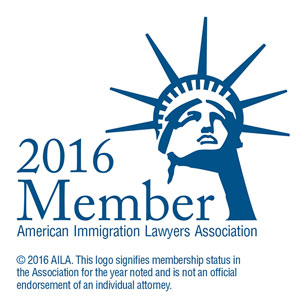Trump’s Cruel Immigration Policies Have No Rational Justification Except to Harass and Intimidate Immigrants such as the Alien Registration Requirement
By Cyrus D. Mehta and Kaitlyn Box*
The Trump administration recently announced that it would enforce INA § 262, which requires noncitizens aged 14 years or older to register with the government if they were not already registered and fingerprinted when applying for a U.S. visa. Children are required to reregister within 30 days of their 14th birthday. The following categories of noncitizens have already registered by virtue of their manner of entry into the U.S., or through an application later filed with USCIS:
- Lawful permanent residents;
- Noncitizens paroled into the United States under INA 212(d)(5), even if the period of parole has expired;
- Noncitizens admitted to the United States as nonimmigrants who were issued Form I-94 or I-94W (paper or electronic), even if the period of admission has expired;
- All noncitizens present in the United States who were issued immigrant or nonimmigrant visas prior to arrival;
- Noncitizens whom DHS has placed into removal proceedings;
- Noncitizens issued an employment authorization document;
- Noncitizens who have applied for lawful permanent residence using Forms I-485, I-687, I-691, I-698, I-700, even if the applications were denied; and
- Noncitizens issued Border Crossing Cards.
Many other categories of noncitizens may be required to comply with the registration requirement, including those who “are present in the United States without inspection and admission or inspection and parole; Canadian visitors who entered the United States at land ports of entry and were not issued evidence of registration; and,[noncitizens] who submitted one or more benefit requests to USCIS not listed in 8 CFR 264.1(a), including applications for Deferred Action for Childhood Arrivals or Temporary Protected Status, who were not issued evidence of registration.” As of the date of publication of this blog, DHS has yet to officially promulgate a registration form or further instructions.
Although the provision referencing registration at INA § 262 existed, it was rarely enforced and the new announcement either literally interprets a 1952 statutes or reinterprets it in a way that highlights this administration’s animus towards immigrants. These include Canadian visitors, DACA recipients, and children who received visa stamps, including H-4 visas, before their 14th birthday to register upon turning 14. Failure to comply may result in “criminal and civil penalties, up to and including misdemeanor prosecution and the payment of fines”. The planned registration system has a predecessor in the National Security Entry-Exit Registration System (NSEERS), which, unlike the Trump administration’s policy, was created in response to a pressing national security concern – the September 11 terrorist attacks. NSEERS resulted in widespread confusion and discriminatory enforcement, particularly towards Muslim noncitizens. The Trump administration’s registration system is likely to have similar consequences.
USCIS also recently gave notice of the planned promulgation of a new form to designed to “establish enhanced screening and vetting standards and procedures to enable USCIS to assess an alien’s eligibility to receive an immigration-related benefit.” The form would apply to numerous immigration applications, including applications for asylum, adjustment of status, naturalization, and travel documents. It would collect a total of 24 items of information about applicants, including the names, addresses, and telephone numbers of family members such as parents, spouses, siblings, and children. Requiring applicants for immigration benefits to disclose this information could deter some from filing altogether, particularly if they fear exposing undocumented family members to immigration enforcement.
The Trump administration’s pattern of enacting inhumane immigration is further evidenced by its decision to end the Biden-era parole program for Cubans, Haitians, Nicaraguans, and Venezuelans, termination of the Uniting for Ukraine program, and its termination of the Temporary Protected Status (TPS) designation for Venezuela. Trump further plans to pause the adjudication of any applications for immigration benefits, which could include asylum or family-based adjustment of status applications, submitted by noncitizens who entered the United States pursuant to a parole program. These people played by the rules and were paroled into the US following the instructions of the Biden administration, and now the Trump administration has pulled the rug from under their feet. Another example of a viciously inhumane policy is the restriction of birthright citizenship to only children born in the US to at least one parent who is a citizen or a permanent resident, see our blogs here and here, via an executive order. Fortunately, the courts have blocked the Trump’s unconstitutional reinterpretation of the 14th Amendment to the US Constitution for now, but if this policy took effect, it would render children undocumented, stateless or as temporary nonimmigrants, from the moment they are born. It would also create a permanent underclass.
Among Trump’s cruelest immigration policies to date has been the transfer of a group of primarily Venezuelan nationals with final orders of removal to Guantanamo Bay, a detention facility known for abusive conditions that was set up to detain alleged terrorists after 9/11. The administration has also removed asylum seekers to Panama and Costa Rica, where some were held in hotels for days on end and afforded no opportunity to seek legal relief. Caleb Vitello, formerly acting director of ICE, was required by the Trump administration to personally sign off on releases of any noncitizens from detention, before being summarily dismissed from his position, allegedly for being too pro-immigrant and not removing enough people.
Taken together, these policies, and many more cruel policies that we have not addressed here, illustrate a pattern of harassment and cruelty towards immigrants. Noncitizens who are intimidated and do not register may incur penalties and difficulty applying for immigration benefits in the future, while those who fear providing information about family members may forego filing applications with USCIS. The termination of parole programs and Venezuelan TPS will result in recipients losing work authorization and potentially needing to leave the U.S. These policies will not only be detrimental to immigrants, but also to their American family members and employers.
There has been a dark history in the US resulting in the scapegoating of immigrants in times of crisis. A recent example was the restrictions imposed on noncitizens after the September 11, 2001 attack, which included the NSEERS program that resulted in religious, racial and ethnic profiling (see Have We Learned the Lessons of History? World War II Japanese Internment and Today’s Secret Detentions by Stanley Mark, Suzette Brooks Masters and Cyrus D. Mehta). The delicate balance we strive to achieve as a nation between liberty and security inevitably tips towards security, and civil liberties tend to be compromised. While there can never be a justification to go after immigrants in a time of genuine crisis, Trump has manufactured a crisis to justify his administration’s wantonly cruel attacks on immigrants. The supposed justification for unleashing such cruel policies is based on the ‘Protecting the American People Against Invasion” executive order. The executive order falsely claims that millions of illegal immigrants were invited to the US by the prior administration even though most were paroled into the US under INA 212(d)(5) or sought to apply for asylum under INA. The executive order then makes the exaggerated claim without foundation that “many of these aliens unlawfully within the United States present significant threats to national security and public safety, committing vile and heinous acts against innocent Americans. Others are engaged in hostile activities, including espionage, economic espionage, and preparations for terror-related activities.” While some immigrants may commit crimes, as would US citizens, in any random sampling of a population, they can be dealt with on an individualized basis through the criminal justice system. Whether the crisis is real or manufatured, there is absolutely no justification for this sort of hate towards immigrants.
*Kaitlyn Box is a Partner at Cyrus D. Mehta & Partners PLLC.
The authors thank David Isaacson for suggesting additional cruelest policies of the Trump administration towards immigrants.




